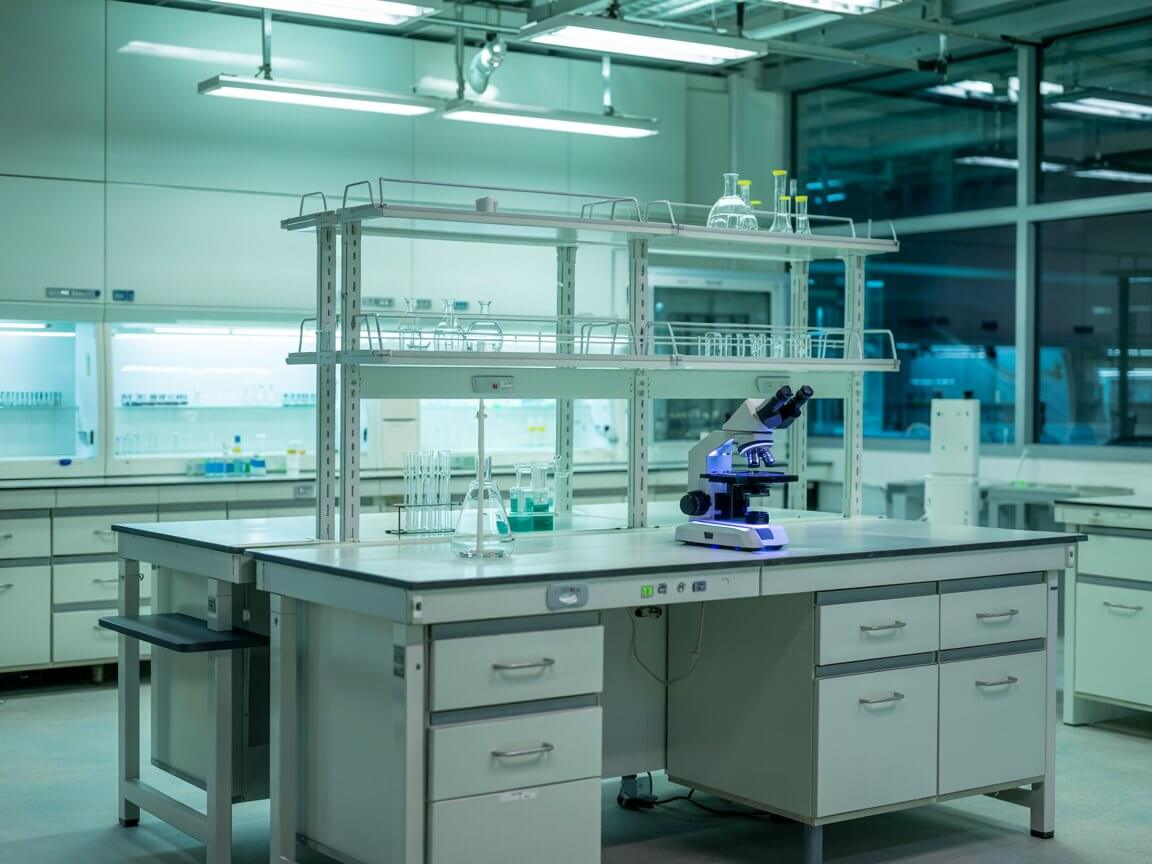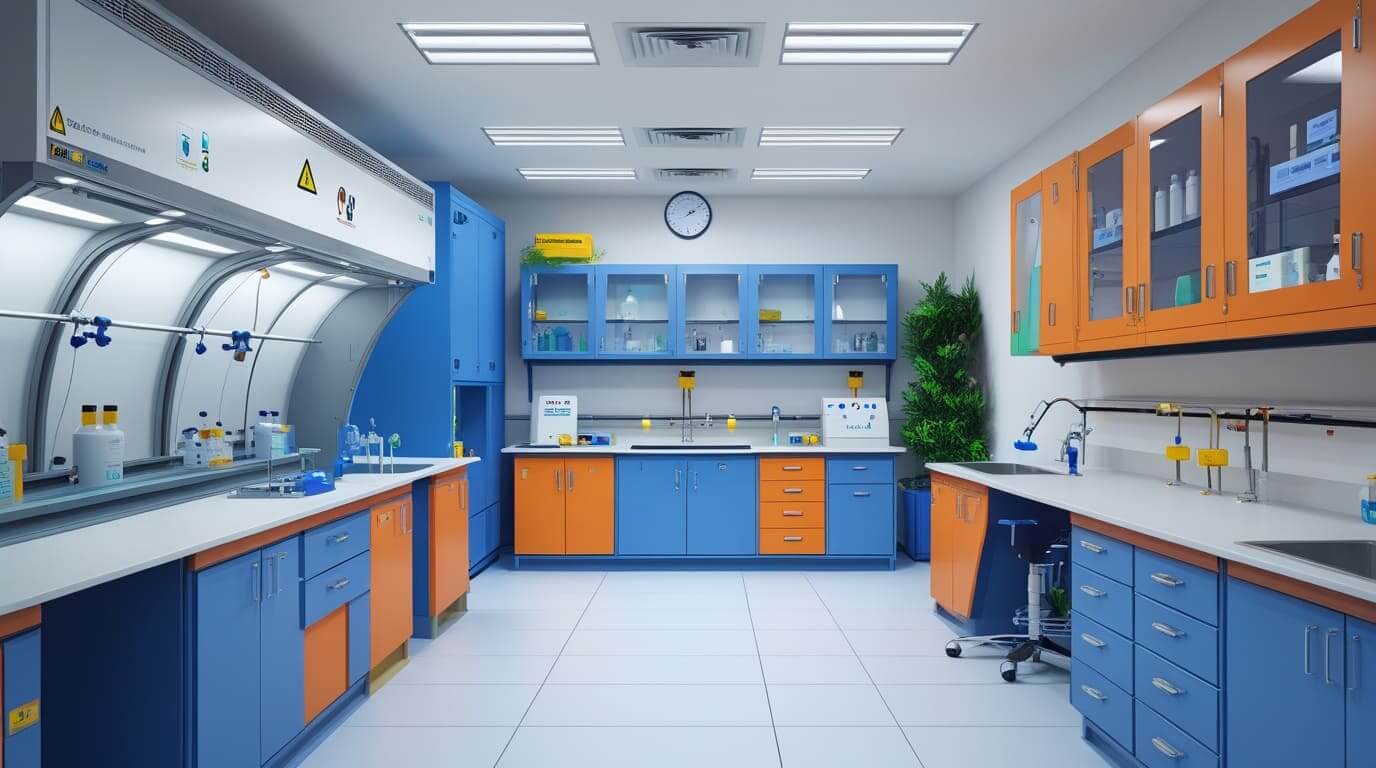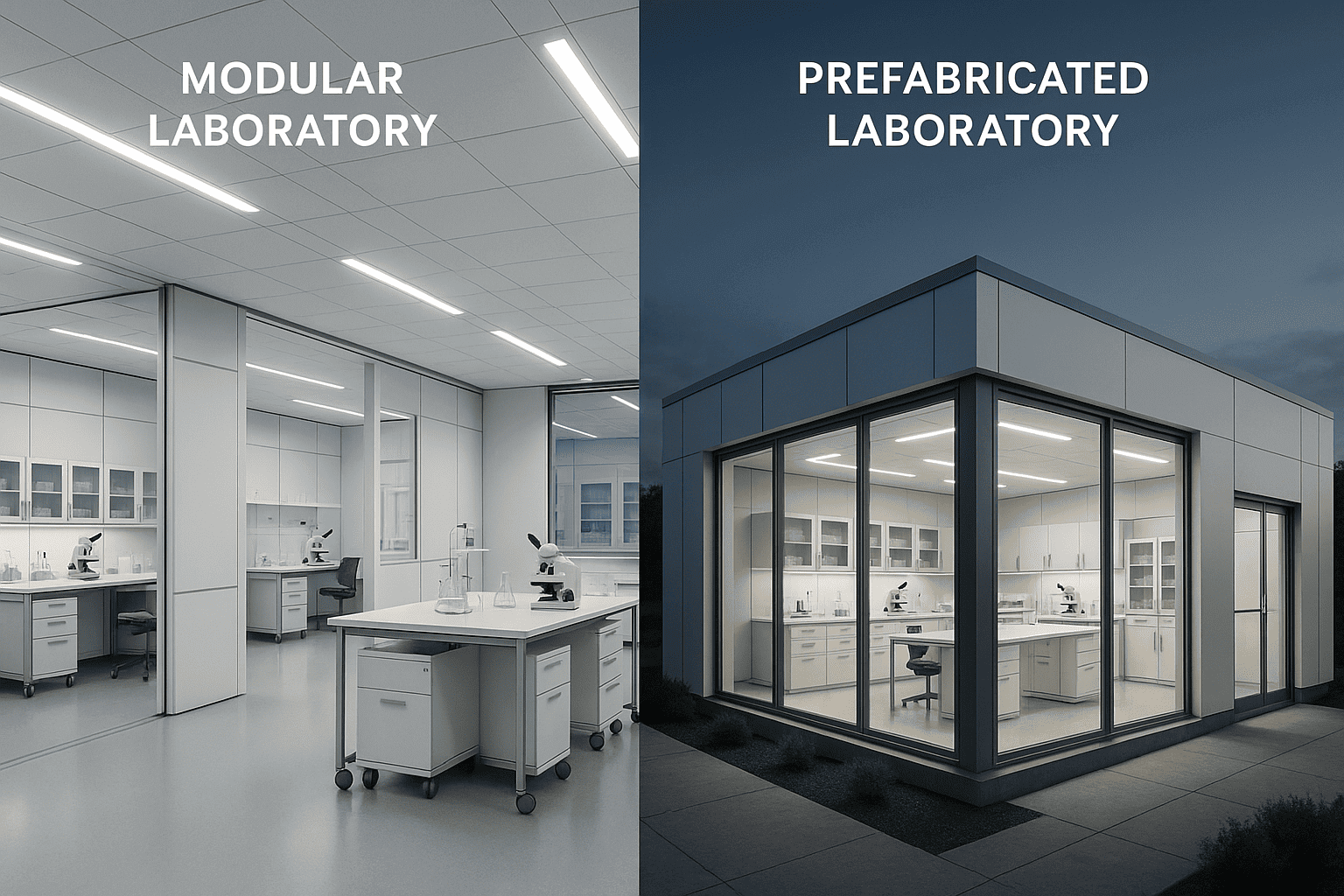Ever walked into a lab and noticed how everything seems perfectly placed, clean, and built to endure? That’s no accident—laboratory furniture plays a vital role in how smoothly and safely a lab operates. But what exactly is laboratory furniture, and why is it so important?
In simple terms, laboratory furniture includes all the workstations, cabinets, storage units, and specialized fixtures designed specifically for laboratory use. Unlike regular furniture, it’s built with functionality, safety, and chemical resistance in mind.
Lab Benches
These are the heart of any laboratory. From prepping samples to conducting experiments, lab benches serve as the main workspace. They’re built tough to handle spills, heat, and frequent cleaning.
Lab Cabinets
Storage is essential. Cabinets keep sensitive materials safe and organized. Some are even ventilated or lockable for extra security, especially when dealing with hazardous chemicals.
These are lifesavers—literally. Fume hoods protect users from toxic fumes by ventilating them outside. They’re crucial in chemical labs.
Lab Workstations
Ergonomically designed to support long working hours, these units often include power sources, computer mounts, and additional storage.
Shelving and Storage Units
Vertical storage helps maximize space, and heavy-duty shelving ensures even the bulkiest equipment is safe and accessible.
Key Features of Quality Laboratory Furniture

Durability
Let’s face it, labs are rough environments. Quality lab furniture is built to last through chemical spills, heat exposure, and mechanical wear.
Chemical Resistance
You don’t want your furniture breaking down because of an acid spill. Lab furniture is often coated or built from materials that can resist corrosion and chemical reactions.
Ergonomic Design
Lab work can mean long hours, so comfort matters. Furniture is designed to reduce strain and improve posture.
Mobility and Flexibility
Modern labs are dynamic. Having furniture on wheels or modular setups makes it easier to reconfigure spaces as needed.
Materials Used in Lab Furniture
Stainless Steel
Known for its strength and hygiene, stainless steel is great for wet labs and cleanrooms.
Epoxy Resin
Highly resistant to heat and chemicals, epoxy resin tops are a go-to for serious chemical labs.
Phenolic Resin
Lightweight but tough, phenolic is good for labs that need mobility and chemical resistance.
Polypropylene
Non-corrosive and ideal for storing aggressive acids and bases—polypropylene is a top pick for storage furniture.
Custom vs. Modular Lab Furniture
Benefits of Modular Designs
Modular furniture offers flexibility, easy installation, and cost-efficiency. Perfect for growing or changing labs.
When to Choose Custom Furniture
Custom pieces are ideal when you need something very specific—like furniture that fits into an odd-shaped room or supports unique lab equipment.
Safety Considerations in Lab Furniture Design
Fire Resistance
Many lab materials are flammable. Fire-resistant furniture is a must, especially in high-risk environments.
Spill Management
Built-in spill containment features help prevent accidents and make cleanup easier.
Ventilation and Fume Control
Proper air circulation is essential. Furniture like ducted hoods and vented cabinets plays a big role in safety.
Applications of Laboratory Furniture
Educational Institutions
Schools and universities use sturdy, easy-to-clean furniture that can handle student use.
Pharmaceutical Labs
These need ultra-clean, sterile workspaces to avoid contamination and ensure safety.
Research Facilities
Flexibility is key here. Researchers often rearrange furniture to suit different experiments.
Industrial Labs
Durability and safety come first. Furniture must withstand heavy use and exposure to hazardous materials.
Conclusion
So, what is laboratory furniture? It’s the backbone of any lab environment. From ensuring safety to providing practical workspaces, lab furniture does more than just “sit pretty.” Whether you’re designing a high-tech research facility or a school lab, choosing the right furniture makes all the difference in performance, safety, and comfort.
FAQs
- What is the most common type of laboratory furniture?
Lab benches are the most common—they’re central to most lab work. - How do I choose the right lab furniture?
Consider your lab’s purpose, chemicals used, safety requirements, and flexibility needs. - Are there standards for lab furniture?
Yes, standards like SEFA (Scientific Equipment and Furniture Association) guide design, safety, and material use. - Can lab furniture be customized?
Absolutely! Custom pieces are great for labs with specific spatial or functional needs. - What materials are best for chemical resistance?
Epoxy and phenolic resins are excellent choices for handling aggressive chemicals.



